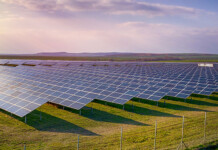The South Australian Government has secured a landmark agreement with ATCO Australia to contract GE Vernova to supply a first-of-its-kind, advanced gas turbine capable of running on 100% renewable hydrogen for the Whyalla hydrogen power plant.
The agreement solidifies South Australia’s role as a global leader in renewable energy and progresses the state’s ambitious Hydrogen Jobs Plan by introducing future-ready, zero-emission power generation technology.
Related article: South Australia’s 200MW Whyalla hydrogen plant approved
At the core of the Whyalla hydrogen power plant are GE Vernova’s LM6000VELOX aeroderivative gas turbines, which have been engineered to be capable to run on 100 per cent renewable hydrogen fuel.
By harnessing the state’s extensive renewable energy resources from large-scale wind and solar farms, the state will be able to produce and store renewable hydrogen, which will fuel the LM6000VELOX turbines and provide reliable, clean power to South Australia’s electricity grid.
ATCO Australia secured an order with GE Vernova in respect of the project, for four LM6000VELOX units with commissioning expected in early 2026.
This marks the first time a GE Vernova power plant project, at commercial scale, will be powered by aeroderivative gas turbine combustion technology capable of operating on 100 per cent hydrogen.
The Whyalla hydrogen plant is expected to deliver 200MW of power and will play a vital role in providing firming power to South Australia’s electricity grid, ensuring reliable energy during periods when wind and solar may be intermittent.
Premier Peter Malinauskas said, “South Australia is at the forefront of the global shift to clean energy, and our investment in 100% hydrogen-capable technology at Whyalla sets a new standard for what’s possible.
Related article: Work begins on AGIG’s Hydrogen Park Murray Valley project
“This partnership with GE Vernova, through ATCO Australia, brings us one step closer to a future powered by zero-emission hydrogen, positioning South Australia as a leader in renewable energy innovation.
“By integrating this world-first technology, we are not only supporting our state’s energy security but also creating a blueprint for sustainable, hydrogen-fuelled power that the rest of the world can follow.”







